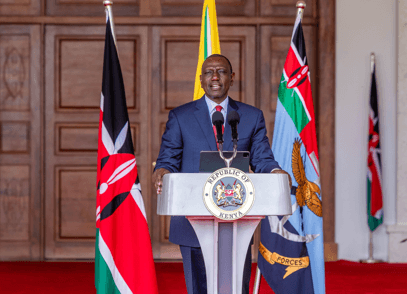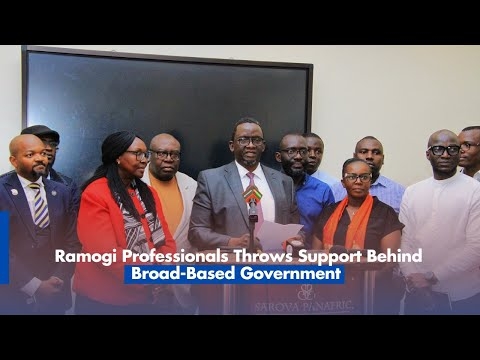The “right to education” is well-known. The President’s task force on education last year used the phrase several times. It recognised that among the obstacles to achieving that right is violence in school, including physical punishing, sexual violence, bullying and cyber-violence. They also mentioned the Garissa terrorist attack and we could add banditry (and floods). Drug and alcohol abuse and lack of help for affected students were also factors. It mentioned the unequal education experienced by marginalised communities and areas, also the importance of adult education, the inadequacy of special needs education among other issues.
The Constitution
The Constitution says quite a lot about it. “Every person has the right to education.” Look a bit further and you find that “every child has the right to free and compulsory basic education.”
More specifically, people with disabilities are entitled to education in institutions that are not separate from society unless that is in their interests. And no one can be denied access to any institution (obviously including educational institutions) because of their beliefs.
Sometimes the expression is “State duties”. It must take measures to ensure youth access to relevant education and training. Affirmative action programmes must ensure access for minorities and marginalised groups to special education opportunities. The elderly must be able to pursue their personal development – which may involve education.
Other constitutional provisions are also relevant. Basic is equality including “the full and equal enjoyment of all rights”. And if you think “there’s no way Kenya can straight away provide education for everyone,” Article 21 recognises that we may need measures to achieve the “progressive realisation” of it. But the child’s right to “free and compulsory basic education” is different. Every child in Kenya is entitled to it now.
Also relevant are the rights to dignity, to be free from inhumane or degrading treatment (including the right not to be subject to “corporal punishment” – like beating), privacy, freedom of religion and belief, and freedom of expression.
How does our system measure up?
Kenya has been praised in various quarters for its education system. Although it is at position 146 out of 185 in the human development index its mean number of years schooling (7.7) is higher than most in the medium human development group.
But percentages are only part of the issue. Much work has gone on about what it actually means to have a right like education, health, housing. Much discussed are the ‘4As’. First, it must be available – it must exist, as must other vital parts of an education system, such as books, buildings, water, sanitation. We all know that too many schools that exist in name do not have even all these basic elements.
Second, it must be accessible. This means there must be no discrimination; it must be affordable - primary education must be free. And it must be physically accessible - within reasonable distance, and accessible to those with disabilities. Again we know that education is unevenly distributed, and financially even primary school can be expensive with the number of fees schools dream up, despite Ministry Guidelines.
Third, acceptability: students, their families and communities must accept what is taught and how it is taught. This does not mean that every child must love every lesson. But broadly they must see the point of the education.
And fourth it must be adaptable – able to change over time and according to the people who are receiving it.
Some issues
I am thinking about a few issues that I believe are problematic (aside from major obvious issues like regional disparities, and general poverty) and ask whether the right to education contributes to addressing them (or at least identifying them).
First is curriculum. There is a sense that young Kenyans do not feel involved in their country. They don’t vote, think politics and participation are a waste of time and feel hopeless about the future. Official documents about education seem to suggest that the contribution of education to our economy and national future lies in skills and science. The current draft Sessional Paper on Education Policy does also talk about indigenous knowledge (though in a most superficial way). There is a tendency to think of education as fitting young people for the market.
Second, there is more to education than fitting into the job market. The International Covenant on Economic, Social and Cultural Rights says parties agree that “education shall be directed to the full development of the human personality and the sense of its dignity, and shall strengthen the respect for human rights and fundamental freedoms.” It further says that “education shall enable all persons to participate effectively in a free society, ….”
What happened to history, for example? Young Kenyans need to understand who they are, what has happened to their country in the past, in order to be able to think about their future.
Third, people talk about the colonial legacy as being racist. What was inherited was particularly classist. Harrow School to Oxford to high status (or sustaining existing high status) is replaced by Alliance High School and the University of Nairobi. The draft sessional paper says “The national, extra-county and county schools are better endowed with infrastructure and other learning resources, …. This disadvantages the sub-county schools.” And the students, surely! About 57 percent of students who joined Form 1 this year went to these schools. The system repeatedly condemns young people to a sense of failure, and to poorer quality of education and chances in life. All based on examination systems that we know will be partly determined by family’s education, wealth, ability to encourage children. Class is inherited!
Fourth. Many children apparently cannot go to school because they cannot afford uniforms. This is clearly a violation of the right to education. It may go too far to ask “why uniforms at all?” – and there are good reasons. But apart from efforts to stop school/supplier cartels, are there not ways to make the choice of what comprises uniforms less elaborate and expensive? Interestingly, a few years ago the UK passed a private member’s Bill requiring Ministerial guidance to schools about “the costs aspects of school uniform policies”. And how can our Ministry of Education actually make its guidance and directives effective?
A supposed partial solution to the cost issues is a bursary scheme. There are an amazing number of these, even excluding the private charitable sector. Much Constituency Development Fund money goes to bursaries. So does the Affirmative Action Fund money (the women reps’ CDF). Then there are presidential bursary funds, national bursary funds and county bursary funds.
Self-evidently, this is not an efficient way of allocating these funds. Although, of course, many people benefit, many young people in great need do not. Some who are not deserving do benefit. Research has shown that much politics, corruption and inefficiency are involved in some of these funds. Some simply do not have the ability to assess the accuracy of statements about incomes on application forms.
This system – or non-system – tends to benefit the children of families who are more clued in. They also tend to personalise bursary giving, with people feeling grateful to MPs, the President and so on. They do not operate on the basis of right, more like charity. And as one writer said long ago: “charity honours the giver but humiliates the recipient.” A breach of Article 28 (human dignity).
One report said in January this year that 300,000 Form 1 students were still lacking fees. That is more than 20 per cent of all the Form 1s. Some would have got support later. But if all that bursary money actually went to schools how much would it contribute to reducing fees for all? Or why don’t we have a single centralised system? I am not sure counties ought to spend money on bursaries anyway – most education is a national function.
A right is not charity. It is not someone’s generosity. Careful thought and planning should be applied to it. Not quick fixes. The Constitution requires no less.













